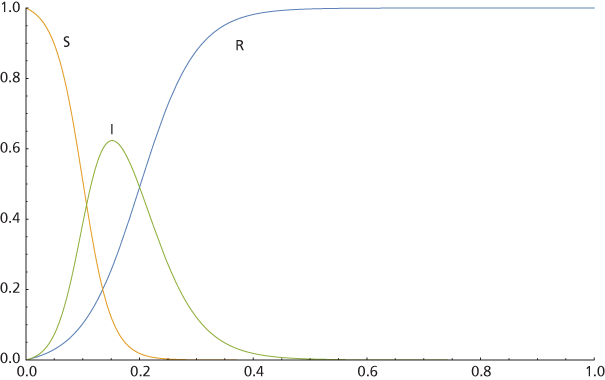SIR epidemiology model

where α is a positive constant relating to how contagious the disease is and the level of contact between people and β is a positive constant relating to the rate of recovery. If cases grow, then the maximum value of I is an increasing function of R0 = α/β, which is the expected number of people an infected person infects.
Such an SIR model makes accurate predictions for a disease spreading through a homogeneous closed population, but clearly the model does not take into account different demographics within a population, movement of people, mutation of the disease, catching the disease more than once, and responses from governments and society. There are many other so-called ‘compartmental models' addressing some of these aspects.

Graphs of S, I, and R in an epidemiology model
- t-distribution
- telescoping series
- temperature
- tend to
- tension
- tensor
- tensor product
- tera-
- term
- terminal speed
- terminating decimal
- ternary relation
- ternary representation
- tessellation
- test function
- test statistic
- tetra-
- tetrahedral number
- tetrahedron
- TeX
- t-formulae
- Thales of Miletus
- theorem
- Theorema Egregium
- theorem proving